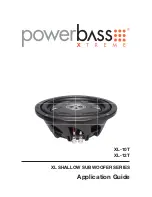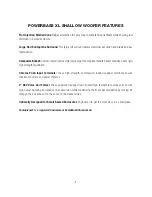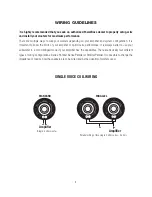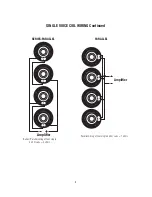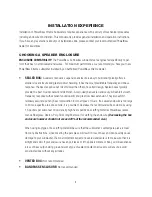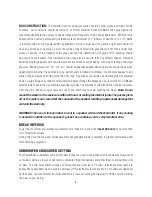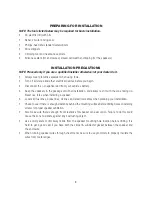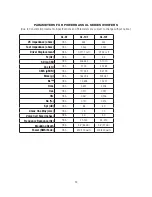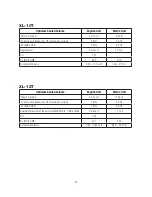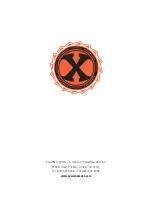
BOX CONSTRUCTION:
The material used for enclosure walls should be solid, dense and free of voids
or warps. Your enclosure should be made ¾” or 19mm material, Finland or Baltic birch type plywood is
recommended where the enclosure will be transported frequently. High-density fiberboard - MDF (not chip
board) can be used on permanently installed systems. Minimum of 1” (25mm) or double ¾” (1-1/2”) baffle
is recommended on high-powered SPL applications. Corners must be strong and air tight and should not
have any air leaks or openings. Joints should be properly filled with glue that will not crack under high
stress or impact. If the integrity of the glue seal can’t be determined, hot glue or RTV caulking should
be used to seal all seams. Fiber reinforced resin may also be used to form any difficult shapes. However
avoid making large panels with resin to eliminate any chances of box flexing, cracking or ratting under high
pressure. Bracing made of 2 x 2” or 2 x 4” should be liberally applied either inside or outside the cabinet,
depending on whether the cabinet is to be permanently installed or portable. This principle applies to any
walls of the enclosure spanning more than 18” long. Any braces should also be liberally glued or screwed
down on edge. Edge-wise drilled, and countersunk holes through the braces can be used for #10-2 Flathead
wood screws to avoid the use of more expensive lag bolts. The majority of strength from an enclosure comes
from the glue. When using screws be sure to pre-drill holes to avoid splitting the wood.
Note: Do not
mount the woofer in the enclosure within 24 hours of sealing the internal joints. The gasses given
off as the sealer cures can affect the surround of the speaker resulting in permanent damage that
will void the warranty.
WARNING! The use of silicone rubber to seal in a speaker will void the Warranty! If any sealing
is needed in addition to the speaker’s gasket, use caulking cord or vinyl weather strip.
BREAK IN PERIOD
To get the most from your woofer we recommend a “break-in” period of at
least 40 hours
at no more than
1/3 of maximum volume.
During this time the cone and spider assembly will gradually break in resulting in greater performance and
more listening enjoyment.
SUBWOOFER CROSSOVER SETTING
Your PowerBass subwoofers will perform best if they are used in conjuction with a subwoofer crossover of
some kind. Using a crossover will remove unwanted high frequencies and allow them to concentrate only
on bass. The two most common types of crossovers are “passive” or “active” (electronic crossovers are
active). Many amplifiers have a built in Low Pass (LPF) electronic crossover circuit. For optimum subwoofer
performance we recommend an initial electronic crossover setting between 80-100Hz and then tuning
the bass to your liking.
8

